Chloride Ghost Town
All of the 20 occupied houses in this mostly abandoned town feature some curious display of junk art.
Located just a short drive from the deteriorating town of Santa Claus, Chloride seems to resemble any kitschy Wild West village turned tourist trap. But if you look a little deeper, you’ll find something that makes this ghost town stand out: a wonderfully bizarre collection of junk art and a display of giant murals.
In science, chloride is an ion used to desalinate seawater into drinking water. Which is ironic, because the Arizona town of the same name is incredibly dry. Founded in 1862 as a silver mining town, Chloride was once home to some 75 mines and 5,000 residents. The local miners excavated minerals like silver, gold, and turquoise for over six decades, until in the late 1920s when the town was burnt to the ground in its (near) entirety. By the 1940s, it had practically become a ghost town.
Now Chloride is making a comeback, thanks to tourism. With new attractions like mock gunfights, Arizona’s oldest post office, and “The World’s Only All-Female Gun Fighting Troupe”, the town is a chance to walk through an original Wild West town. Yet amid all this, the two most unique characteristics of Chloride often go unnoticed.
The bizarre junk art of Chloride can easily be seen along the roadside of the non-historic part of town. Drivers can admire a flamingo made of a gas tank, a tin man with a blue hat, and a junk tree with rusty items hanging from the branches. The graves in the town cemetery are even topped with old telephones. In fact, of the 20 currently-inhabited residences of Chloride, each of them features some display of junk art. One house, for example, features an elaborate bottle tree; another displays a metallic spider next to a caterpillar made of bowling balls.
Harder to reach, yet equally worth the visit, are the Murals of Chloride. A 1.3-mile, 4-wheel-drive-only road past abandoned mines and ancient Native American petroglyphs will take you up the hill to the murals of Roy Purcell, who, in 1966, was a local prospector with some extra time on his hands. Not yet showing the signs of weathering, Purcell’s “The Journey” covers 2,000 square feet of cliffside granite and is dense in symbolism, featuring a yin yang, a giant red snake spanning multiple rocks, and a fertility goddess.

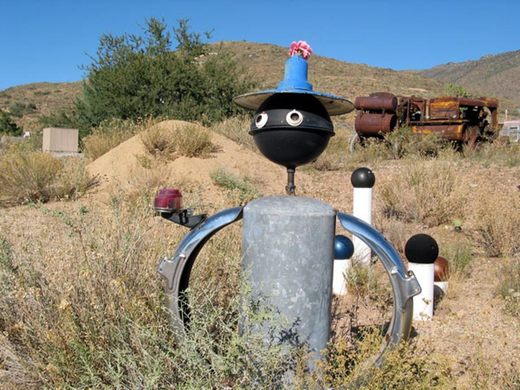




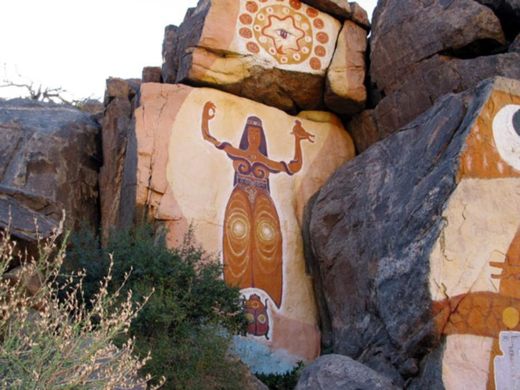

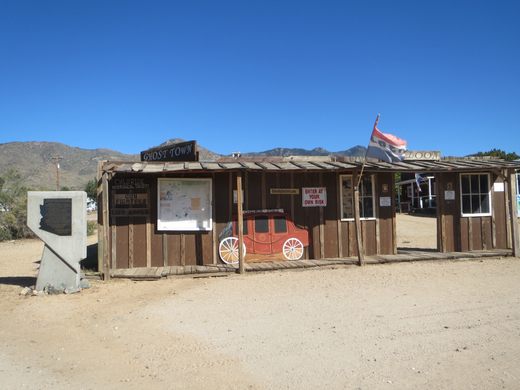


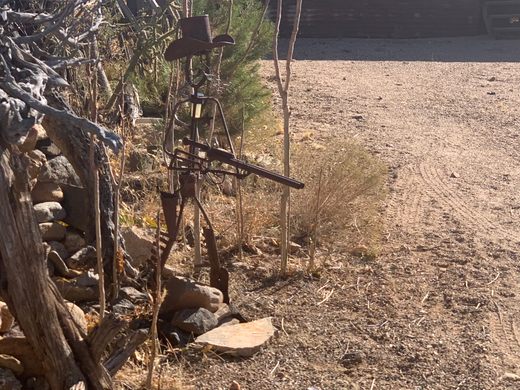
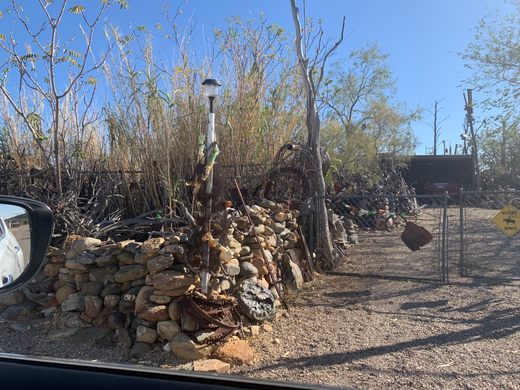

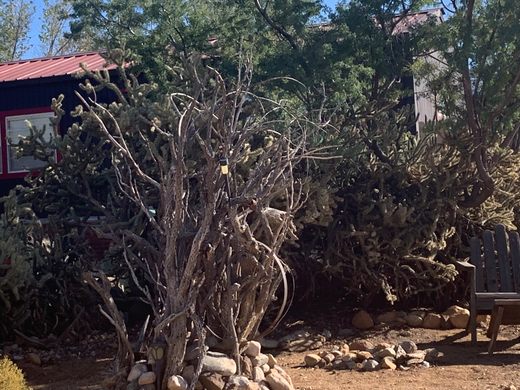





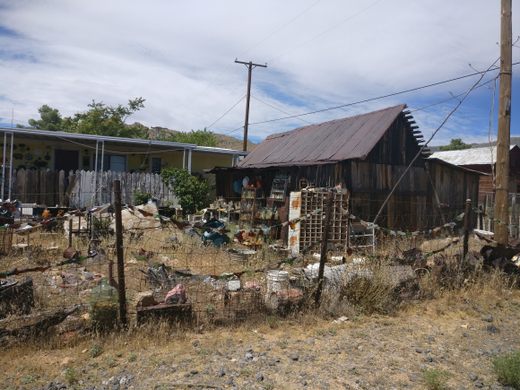


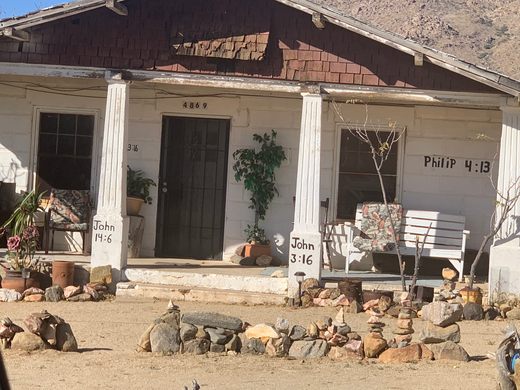






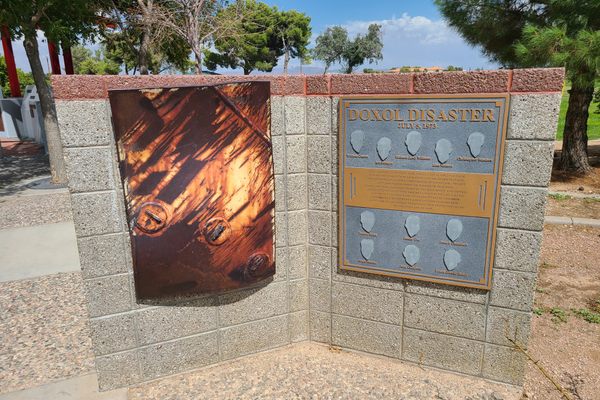

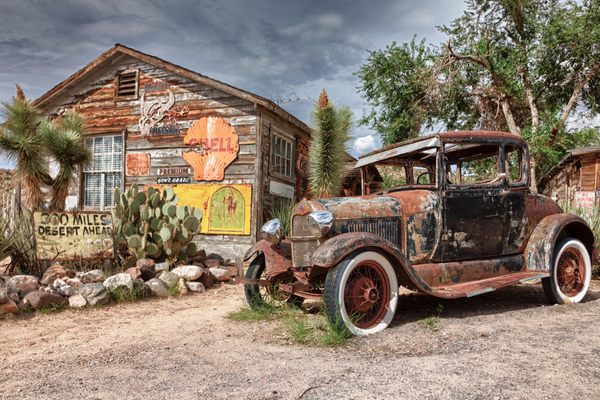






Follow us on Twitter to get the latest on the world's hidden wonders.
Like us on Facebook to get the latest on the world's hidden wonders.
Follow us on Twitter Like us on Facebook